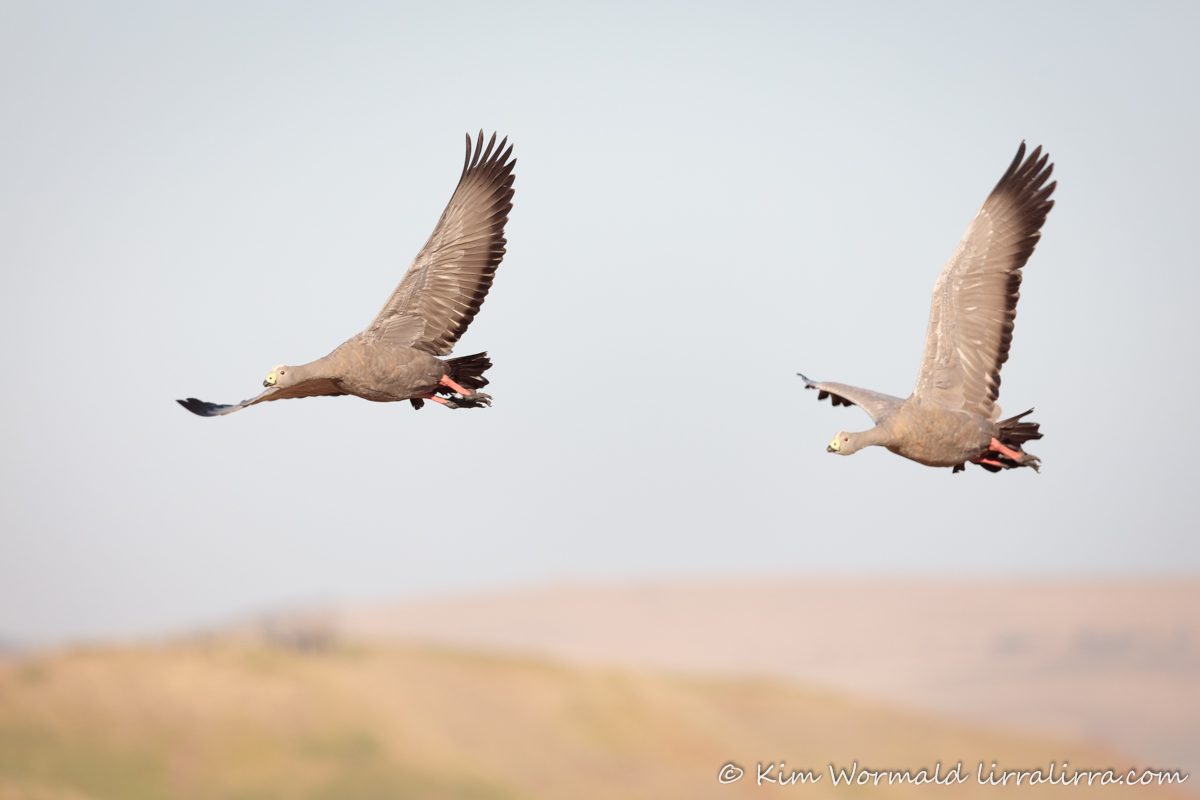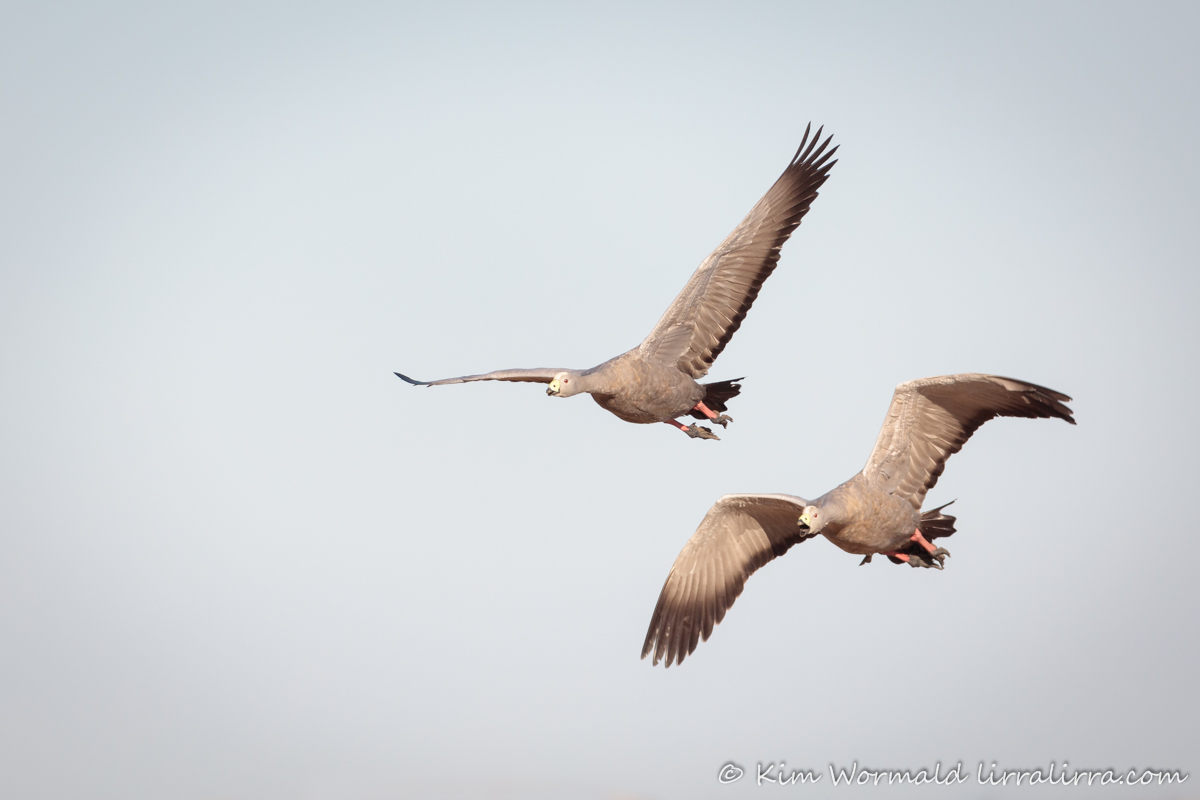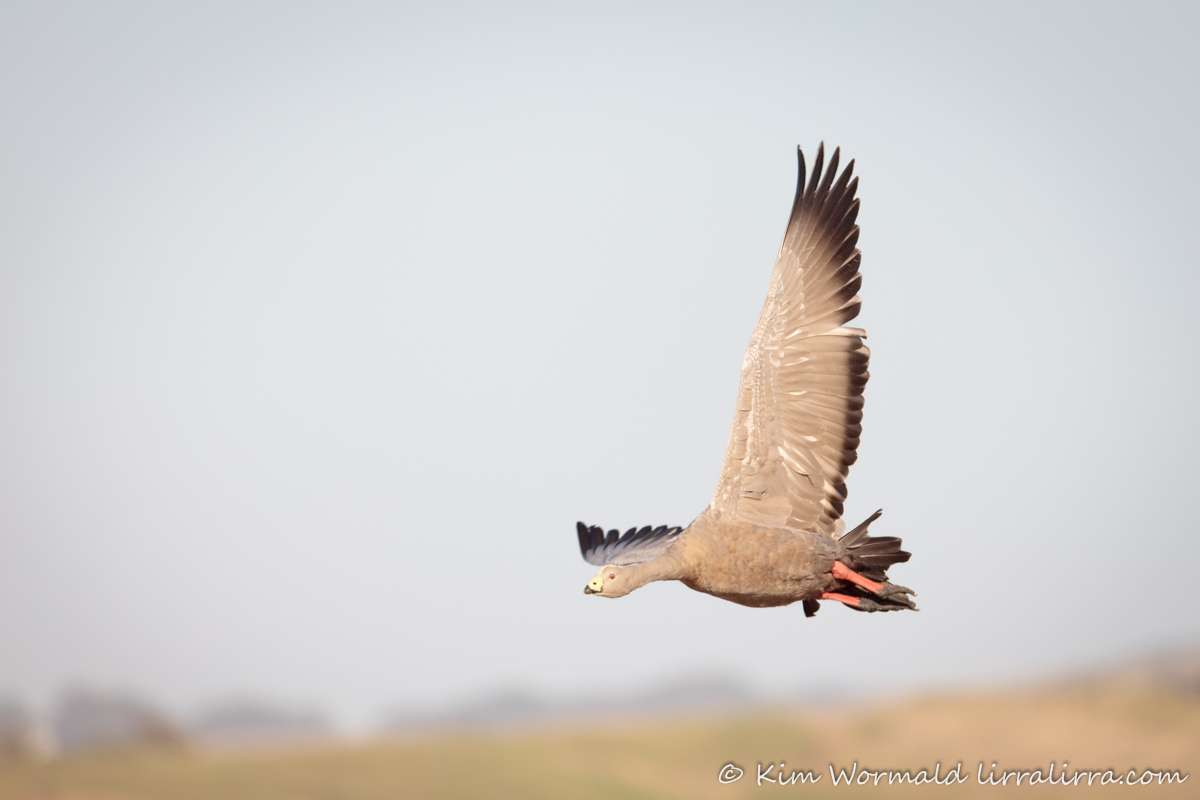Cape Barren Geese call as they fly, which is very thoughtful as it gave me time to look skywards instead of watching waves crashing at the foot of the cliff.
Cape Barren Goose (Cereopsis novaehollandiae)
1/2000, f/6.3, ISO 800
This striking species made a fantastic recovery after facing extinction. They now live in healthy numbers on Phillip Island where they are often seen meandering along the freshly-mown roadside edges to graze on new shoots. There are signs informing drivers about birds on the roads; please drive mindfully if you visit the island, these birds mate for life so it’s always extra sad if one is hurt.
Cape Barren Goose (Cereopsis novaehollandiae)
1/2000, f/6.3, ISO 800
It seems remarkable that such heavy set birds with their solid red legs and big black feet can get airborne. Their wingspan is between 1.5-1.9 metres and the power in their wings must be phenomenal.
Cape Barren Goose (Cereopsis novaehollandiae)
1/2000, f/6.3, ISO 800
Well, it’s not every day a goose flies by, or even a pair of geese but it’s sure impressive when it happens.
Happy birding
Kim
~ thank you for visiting and commenting
~ if you would like to join the subscribers receiving a weekly email when lirralirra is updated please use the ‘subscribe’ box above right




Nice work, Kim.
Thank you, Neil
Hi Kim how fortunate you were in the right place at the right time.a beautiful image and how gracefulthey are.
Kathleen
I was lucky Kathleen. It’s funny that such a large, lumbering bird can look graceful.
PS: Comment issue gone. Thank you.
Oh good! I hope it stays good, thanks for letting me know.
Aerodynamically unsound – but it works.
What an amazing sight and how lovely to hear that their numbers have increased.
We need some good news stories right now don’t we.